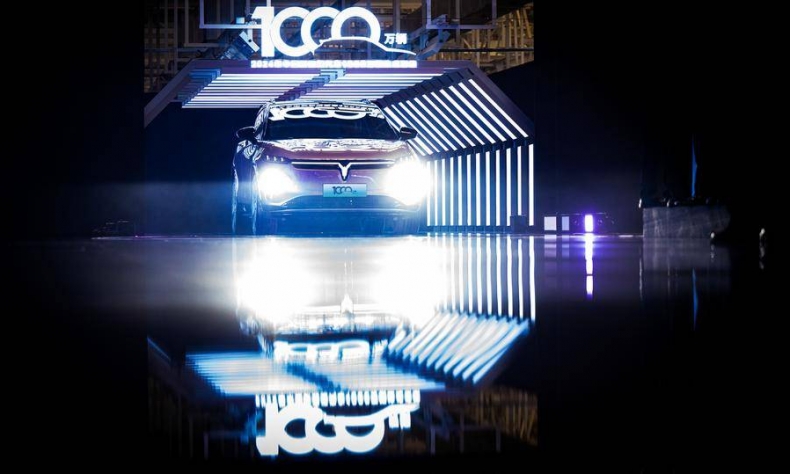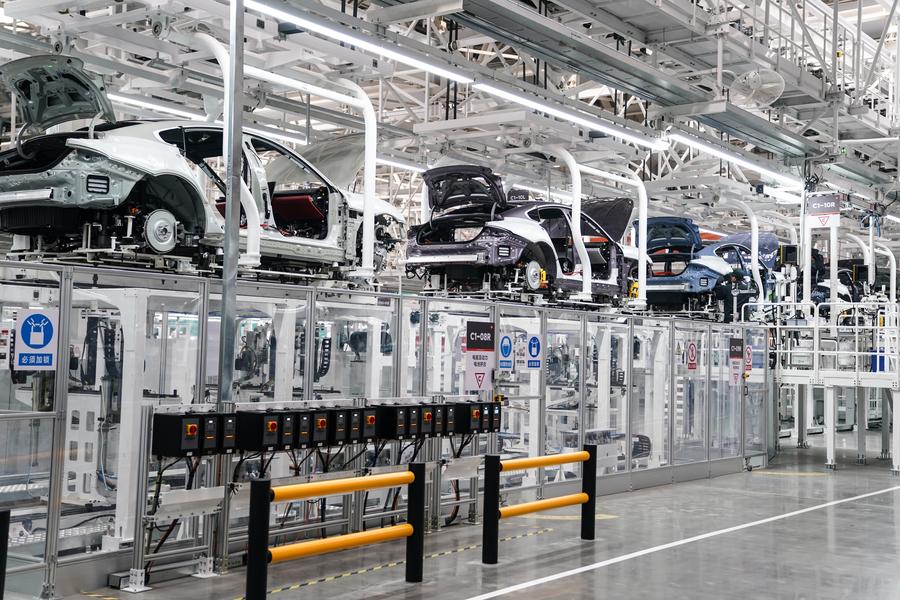An EV Upsurge

While hastening the pursuit of emission reduction targets, the growth of the EV industry has also added strong impetus to China’s economic development.
Despite some Western politicians clamoring to suppress the development of China’s electric vehicles (EVs) and stigmatize them as being part of the country’s “industrial overcapacity,” China’s EV industry continues to maintain a good momentum of growth. According to figures released by the China Association of Automobile Manufacturers (CAAM), China’s 10 millionth EV this year rolled off the production line on the morning of November 14, making the country the first in the world to reach the milestone.
China is not only a major producer of EVs, but also a major consumer and exporter. According to the CAAM, about 80-90 percent of the EVs produced in China are used to meet domestic demand, with the rest exported to international markets. China exported some 679,000, 1.2 million and 818,000 EVs in 2022, 2023 and January-August 2024, respectively.
An annual output exceeding 10 million EVs is not merely a number, but speaks volumes about China’s green and low-carbon revolution. The rapid development of the EV industry demonstrates the Chinese Government’s strong determination to promote green and low-carbon development and make positive contributions to global carbon neutrality.
In order to protect the environment and address climate change, China has stepped up its green development efforts and set the clear goals of carbon peaking before 2030 and carbon neutrality before 2060. Energy conservation and emission reduction have been promoted as important ways to achieve green and low-carbon transition, including by developing EVs and reducing the production, sale and use of petroleum-fueled vehicles.
In 2009, China launched a three-year EV pilot project, involving 10 cities each year and 1,000 vehicles in each city, to accelerate EV development. A decade later, in 2019 alone, China made and sold more than 1 million EVs. By 2022, the annual production and sales of EVs had exceeded 5 million units. Just two years later, China’s annual EV output has now entered the era of 10 million.

The output of more than 10 million units shows that China’s diversified policy support for the EV industry in recent years has been successful. From the perspective of national energy security, these policies have reduced the country’s dependence on oil imports, which conforms to the global trend of energy conservation and emission reduction, and represents major progress in green transport and sustainable development. The increase in the number of EVs means a reduction in fuel consumption, which will reduce greenhouse gas emissions, greatly alleviate energy pressure and promote environmental protection. It is estimated that, based on driving 10,000 km per year, each EV reduces carbon emissions by an average of around 1.66 tons per year. In 2023, EVs in China reduced carbon emissions by about 50 million tons, making a huge contribution to the global response to climate change. As more EVs are consumed, this contribution will increase.
While hastening the pursuit of emission reduction targets, the growth of the EV industry has also added strong impetus to China’s economic development. The increase in EV production is promoting the development of the upstream and downstream industrial chains, involving fields such as battery manufacturing, charging facility construction and intelligent vehicle technology. This industrial upgrading injects new vitality into national economic growth, increases employment and boosts further technological progress. Moreover, the rise of Chinese EV brands, such as BYD, Zeekr and Chery, has made the market more vigorous and demonstrated the competitiveness of China’s EV market.
At present, China’s EV production and sales volumes account for more than 60 percent of the world’s totals, ranking first in the world for nine consecutive years. These achievements are the result of the breakthroughs China’s EV manufacturing industry has made in both technology and marketing.
According to the International Energy Agency, to achieve the goal of carbon neutrality, annual global sales of EVs must surpass 45 million units by 2030. Obviously, today’s EV production capacity is not yet capable of meeting this demand. From this perspective, assertions regarding China’s overcapacity in EV production are unfounded. China needs to further promote high-level opening up, intensify cooperation in EV production and supply chains, supply more new-energy products to the world and continue contributing to global green and low-carbon development.
 Facebook
Facebook
 Twitter
Twitter
 Linkedin
Linkedin
 Google +
Google +










